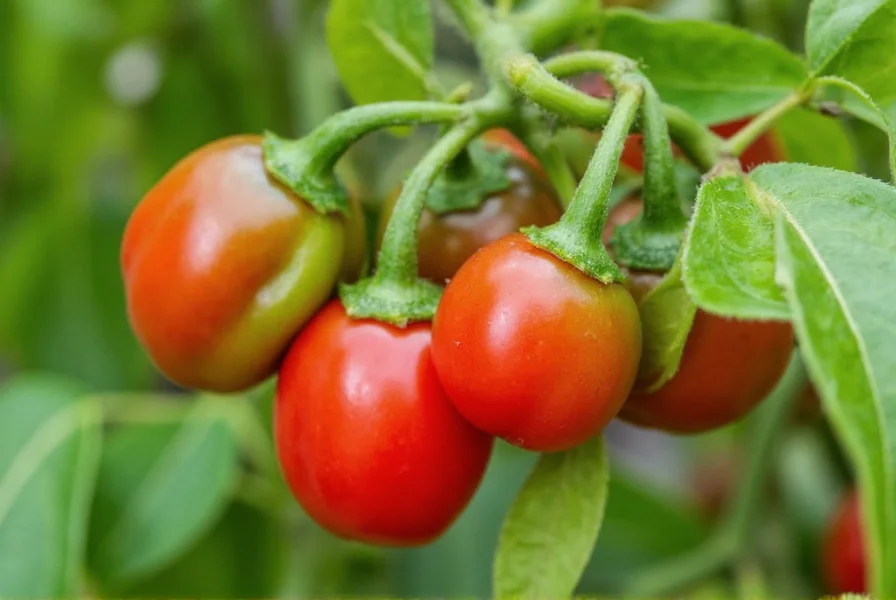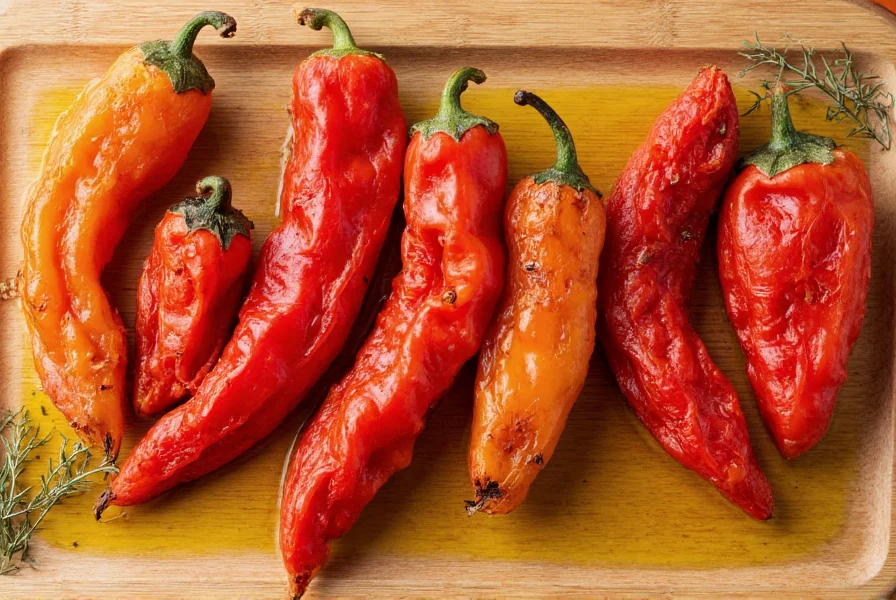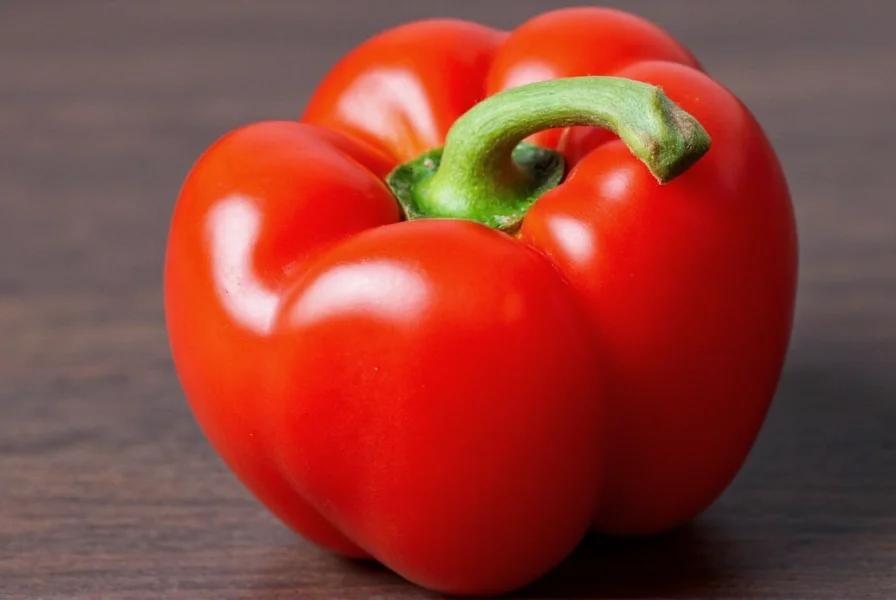Romano peppers, scientifically classified as Capsicum annuum, represent a versatile culinary staple in Italian cooking traditions. These medium-length peppers (typically 6-8 inches) feature thin walls and a distinctive curved shape that differentiates them from bell peppers. Their mild heat level—comparable to banana peppers but sweeter than cubanelles—makes them accessible to most palates while still providing complex flavor dimensions.
Understanding Romano Pepper Characteristics
What sets romano peppers apart from other sweet pepper varieties? Their unique combination of physical attributes and flavor notes creates culinary versatility unmatched by standard bell peppers. When selecting romano peppers at your local market, look for firm, glossy specimens with vibrant coloration. Immature peppers appear bright green, while fully mature versions develop rich red or yellow hues depending on the specific cultivar.
The flavor profile evolves significantly as these peppers ripen. Green romano peppers offer a clean, slightly grassy taste with subtle sweetness, while red varieties develop deeper caramelized notes perfect for roasting. This flavor transformation explains why Italian chefs often specify particular color stages in traditional recipes.
| Pepper Variety | Scoville Heat Units | Flavor Profile | Best Culinary Uses |
|---|---|---|---|
| Romano | 100-500 | Sweet-earthy with citrus notes | Roasting, grilling, stuffing |
| Cubanelle | 0-1,000 | Milder, more delicate sweetness | Stir-fries, sandwiches |
| Bell Pepper | 0 | Simple sweetness | Raw applications, salads |
| Friar | 100-500 | Similar to romano but fruitier | Grilling, pizza toppings |
Culinary Applications and Preparation Techniques
Professional chefs prize romano peppers for their exceptional performance in high-heat cooking methods. Unlike thicker-walled bell peppers that can become watery when roasted, romano peppers' thin skin and flesh caramelize beautifully, developing complex flavor compounds through the Maillard reaction. The traditional Italian preparation involves charring the peppers over open flame until blistered, then sealing them in a paper bag to steam—this loosens the skin for easy removal while concentrating flavors.
For home cooks seeking authentic results, consider these preparation methods:
- Dry roasting: Place whole peppers directly on gas stove burners set to medium flame, turning frequently until evenly blistered
- Grill preparation: Toss with olive oil and grill over medium heat for 8-10 minutes until tender-crisp
- Quick-pickling: Combine roasted peppers with garlic, oregano, and red wine vinegar for classic Italian antipasto
When incorporating romano peppers into cooked dishes, add them during the final stages of preparation to preserve their delicate flavor. Their thin walls break down quickly compared to bell peppers, making them ideal for quick sautés but less suitable for long simmers.
Growing Romano Peppers Successfully
Gardeners appreciate romano peppers for their relatively straightforward cultivation requirements. These plants thrive in warm climates with full sun exposure and well-draining soil. Start seeds indoors 8-10 weeks before your last expected frost date, maintaining soil temperatures between 70-85°F (21-29°C) for optimal germination.
Key growing considerations include:
- Provide consistent moisture without waterlogging (1-2 inches per week)
- Use balanced fertilizer when flowers appear
- Harvest when peppers reach 6-8 inches and develop glossy sheen
- Allow some peppers to fully ripen to red for seed saving

Storage and Substitution Guidance
Proper storage extends romano peppers' shelf life significantly. Keep unwashed peppers in the crisper drawer of your refrigerator for up to two weeks. For longer preservation, roast and freeze them in olive oil—a traditional Italian method that maintains flavor for up to six months.
When romano peppers aren't available, suitable substitutes depend on your intended use:
- For roasting applications: Use cubanelle peppers or young poblano peppers
- For raw applications: Substitute with sweet banana peppers
- For stuffed pepper recipes: Choose thinner-walled bell pepper varieties

Nutritional Profile and Health Benefits
Romano peppers deliver impressive nutritional value beyond their culinary appeal. A single medium pepper provides:
- 150% of the daily recommended vitamin C
- Significant vitamin A and B6 content
- Only 25 calories per serving
- Valuable dietary fiber (2g per pepper)
These nutritional attributes make romano peppers particularly valuable for supporting immune function and skin health. The carotenoids present in red-ripened varieties offer additional antioxidant benefits compared to their green counterparts.
Authentic Romano Pepper Recipes to Try
Experience romano peppers at their best with these traditional preparations:
- Peperonata: Slow-cooked Italian pepper stew with tomatoes, onions, and fresh herbs
- Peppers alla Pizzaiola: Pan-seared peppers with garlic, oregano, and tomato sauce
- Stuffed Romano Peppers: Fill with Italian sausage, breadcrumbs, and pecorino cheese
For optimal flavor development, always roast or sauté romano peppers before incorporating them into finished dishes. This crucial step transforms their raw grassiness into the sweet, complex notes that define authentic Italian preparations.
Frequently Asked Questions
Are romano peppers the same as cubanelle peppers?
No, while similar, romano and cubanelle peppers have distinct differences. Romano peppers typically have a more pronounced curve and slightly thicker flesh than cubanelles. Romano peppers also develop more complex flavor notes when roasted compared to the milder, more delicate taste of cubanelles. Both measure similarly on the Scoville scale (100-500 units), but their culinary applications differ slightly due to texture variations.
Can I eat romano peppers raw?
Yes, romano peppers can be eaten raw, though their flavor truly shines when cooked. Raw romano peppers have a clean, slightly grassy taste with subtle sweetness. Many Italians enjoy them thinly sliced in salads or as part of antipasto platters. However, cooking—particularly roasting—brings out their natural sugars and develops the complex sweet-earthy flavor profile they're known for in traditional Italian cuisine.
How hot are romano peppers compared to other varieties?
Romano peppers rate between 100-500 Scoville Heat Units (SHU), placing them firmly in the mild pepper category. For comparison: bell peppers measure 0 SHU, jalapeños range from 2,500-8,000 SHU, and habaneros reach 100,000-350,000 SHU. Romano peppers' heat level is similar to banana peppers but slightly less sweet than cubanelles. Their mild heat makes them versatile for family cooking without overwhelming spice.
What's the best way to store fresh romano peppers?
Store unwashed romano peppers in the crisper drawer of your refrigerator for up to two weeks. For longer preservation, roast them until blistered, remove the skins, and store in olive oil in airtight containers—this traditional Italian method maintains flavor for up to six months. Avoid washing peppers before storage, as moisture accelerates spoilage. Never store peppers near ethylene-producing fruits like apples or bananas, which can cause premature ripening.
Can I grow romano peppers in containers?
Yes, romano peppers grow well in containers with proper care. Choose pots at least 12 inches in diameter with excellent drainage. Use a high-quality potting mix amended with compost, and place containers in locations receiving 6-8 hours of direct sunlight daily. Container-grown plants require more frequent watering and feeding than garden-planted peppers—water when the top inch of soil feels dry and apply balanced liquid fertilizer every 2-3 weeks during the growing season.











 浙公网安备
33010002000092号
浙公网安备
33010002000092号 浙B2-20120091-4
浙B2-20120091-4